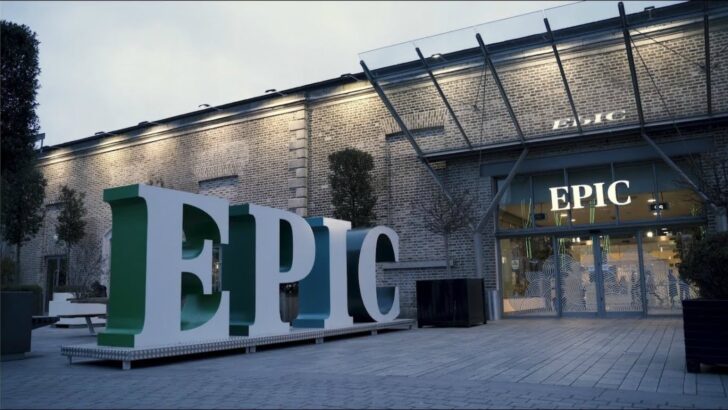Perhaps this is the kind of conversation that must often take place in private.
Recently, a friend reflectively aired this thought, “with so much contraception now available, one must wonder why Irish abortion figures continued to rise.” There were 10,033 abortions in the Irish Republic in 2023, increased from 8,156 in 2022 and 6,577 in 2020.
Perhaps the academic answer would be, ‘more research is needed to answer this question’.
But I have carried out some journalism, and even a book, on this subject over the years, and there are some answers I can suggest. I’m not an expert but I have interviewed experts such as Dr Malcolm Potts, a world specialist in birth control, and other practictioners of family planning – now often called ‘reproductive rights’.
Findings
I’ve been told that some ‘accidental’ pregnancies are (consciously or unconsciously) “fertility testing”: a woman, or a couple, may not want a baby, but they may want to know if they can procreate. Unplanned pregnancy may also be ‘relationship testing’ – a woman seeks to test whether a man will be committed enough to be the father of her child.
It was often more convenient “to decide whether you want to want to be pregnant after you become pregnant, rather than before”
Some people are organised and ‘plan’ every aspect of their lives. Some people are chaotic, and just live day to day. One practitioner told me she stopped telling some young girls to take the pill when they brush their teeth – because some don’t bother to brush their teeth.
An experienced abortion doctor, Peter Huntingford (he had originally been pro-life, but switched sides) told me that it was often more convenient “to decide whether you want to want to be pregnant after you become pregnant, rather than before”.
There is also an expectation today that sexual relations are now ‘free’ from the inconvenience of pregnancy (or STDs). For some individuals, contraception is a ‘hassle’, and they’d rather trust to luck – abortion being seen as a safety net.
Consequences
A famous study carried out at Berkeley in California by Kristin Luker (‘Taking Chances’) probed reasons why some couples deliberately ran the risk of an unwanted pregnancy – ranging from a desire for “spontaneity” to an inexplicable urge of nature. The consumption of alcohol was also a feature.
A practitioner from London’s Brooke Advisory Centre for sexual health told me, “Let’s face it – contraception is artificial.” Ironically, this was precisely the view of Pope Paul VI.
The pro-choice assurance of “legal and rare” is soon overtaken by ‘energetically marketed’ as an inconsequential, frequently-available service”
In addition to the above, abortion is widely advertised. Indeed, in the arguments put forward for ‘reproductive rights’ by the likes of Kamala Harris (and Joe Biden), the word ‘contraception’ is never mentioned.
The pro-choice assurance of “legal and rare” is soon overtaken by ‘energetically marketed’ as an inconsequential, frequently-available service.
***
With Ireland now experiencing an unprecedented level of immigration (141,600 came in 2023), I thought it is time to visit The Irish Emigration Museum, EPIC, on Dublin’s Custom House Quay. It’s based on the idea that there have always been flows of people both ways (64,000 also emigrated last year.)
EPIC is impressive, having been founded by Belfast man Neville Isdell, who has lived in eleven countries but “Ireland has always been where my heart is”. It is professionally constructed, even slick in its presentation. Being subterranean (in the CHQ building), there’s a slightly claustrophobic feeling to its tunnels, leading to various exhibition chambers. But it’s designed with taste and expertise.
The visit is supposed to be “immersive” as you move from one chamber to another, following the emigration experience. The narrative is simple but balanced, and includes the significance of Irish missionaries, from the monastic times up to the present. And although emigration is often associated with the desolation of exile, the stories also include emigrants who succeeded – like the former Fenian John Boyle O’Reilly, who became an influential Boston newspaper editor, and Annie Moore, whose statue stands at Ellis Island, who married contentedly and had eleven children. Dónall MacAmhlaigh, who wrote about being a navvy in England in the 1950s, also described the dances he attended, and the general craic he had.
EPIC has a slightly touristey feel, which perhaps explains the entrance price – €16.74 for a senior ticket, although that allows for a return visit. The Museum shop is pleasant but not outstanding, and appropriately enough a young immigrant person was in charge of the desk where I purchased my trinkets.
***
How sad to learn that the Church of the Immaculate Conception in Saint-Omer, in the Pas-de-Calais region of northern France, is yet another Catholic church which has been subjected to, and partly destroyed by, fire.
Saint-Omer’s special link with Ireland is that Daniel O’Connell was educated there – at a time when the Penal Laws restricted Catholic education in Ireland. He witnessed the French Revolution as a schoolboy in Saint-Omer, with blood from the guillotine running in the streets: it turned him against political violence for all of his life.


 Mary Kenny
Mary Kenny
